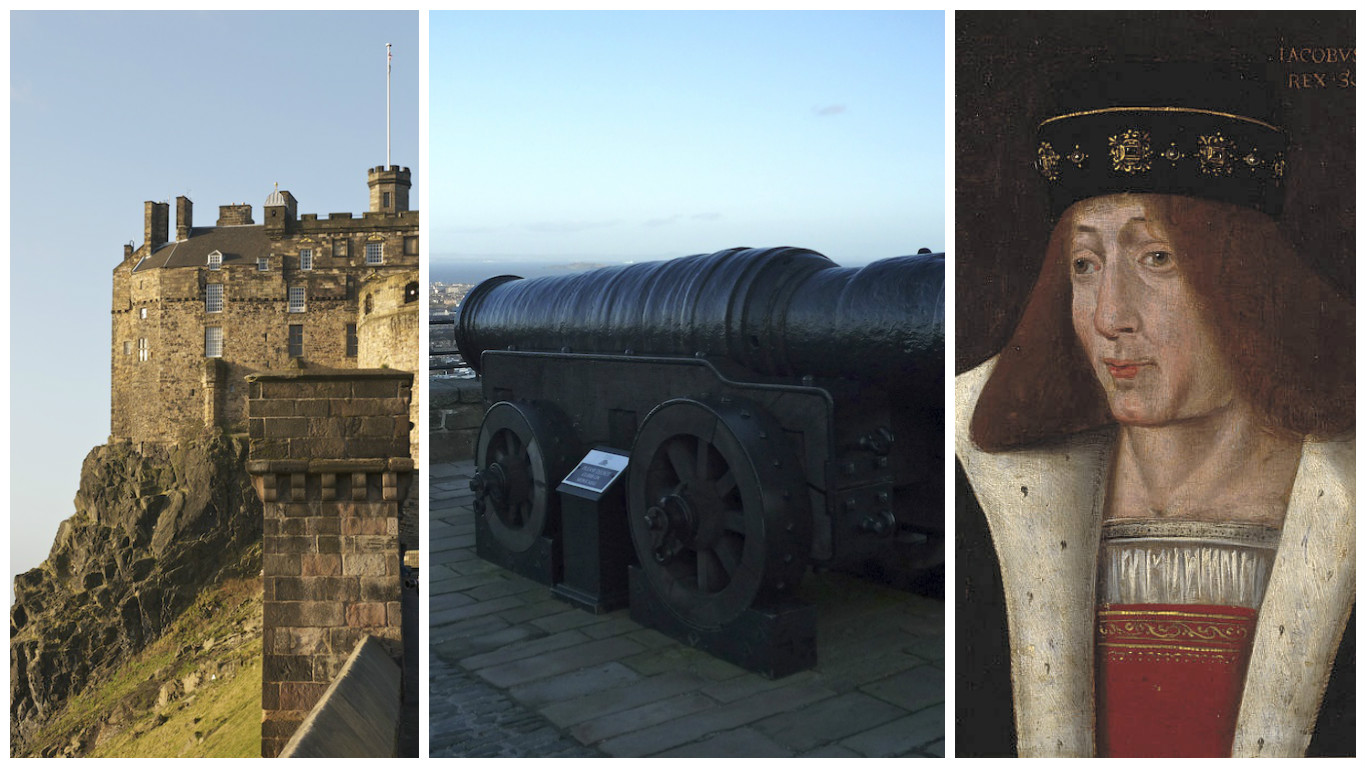
Mons Meg: a damsel of destruction
 On the ramparts of Edinburgh castle sits an iron-clad monster. You can see her from the doorway of St Margaret’s Chapel, that tiny little capsule of tranquillity with its extraordinary carved archway and brilliant windows.
On the ramparts of Edinburgh castle sits an iron-clad monster. You can see her from the doorway of St Margaret’s Chapel, that tiny little capsule of tranquillity with its extraordinary carved archway and brilliant windows.
Silent and menacing, clad in glossy black, she sits glowering across the streets of the city, her gaze riveted on the Firth of Forth.
Meet Mons Meg.
Named after Mons in Belgium, where she is thought to have been forged, Mons Meg is a siege gun, in the class known as a bombard. Weighing 15,366 pounds (nearly seven tons), with a calibre of 20 inches, she used to hurl stone cannon balls over a distance of two miles.
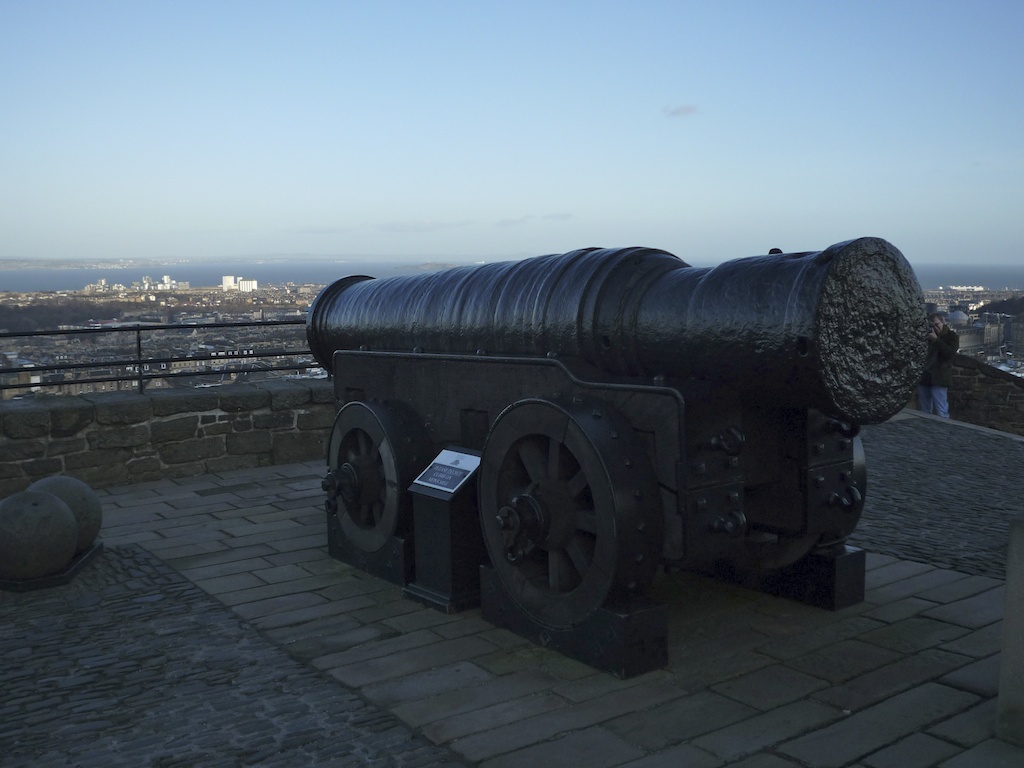 This deadly damsel was the pride of James II, who had a passion for big guns and – just as importantly – the opportunities to try them out. In 1457, he received Mons Meg and a ‘sister’ gun as a present from the Duke of Burgundy, whose great-niece, Mary of Guelders, was James’ wife. The Duke had thought of everything, and with these two evil ladies came an ‘unspecified number’ of gun stones. From the moment they arrived, James must have been itching to try them out.
This deadly damsel was the pride of James II, who had a passion for big guns and – just as importantly – the opportunities to try them out. In 1457, he received Mons Meg and a ‘sister’ gun as a present from the Duke of Burgundy, whose great-niece, Mary of Guelders, was James’ wife. The Duke had thought of everything, and with these two evil ladies came an ‘unspecified number’ of gun stones. From the moment they arrived, James must have been itching to try them out.
 The atmosphere at court must have been quite uneasy, to say the least. James was known for his unsteady temper; and this, together with the vermilion birthmark on his cheek, had earned him the nickname of ‘Fiery Face’ amongst his courtiers. Violence seemed to follow in his wake: in 1440 he had been present at the ‘Black Dinner’, at which the 6th Earl of Douglas and his younger brother were murdered; and in 1452 James himself had stabbed and killed the 8th Earl of Douglas at Stirling Castle and had his body thrown out of a window.
The atmosphere at court must have been quite uneasy, to say the least. James was known for his unsteady temper; and this, together with the vermilion birthmark on his cheek, had earned him the nickname of ‘Fiery Face’ amongst his courtiers. Violence seemed to follow in his wake: in 1440 he had been present at the ‘Black Dinner’, at which the 6th Earl of Douglas and his younger brother were murdered; and in 1452 James himself had stabbed and killed the 8th Earl of Douglas at Stirling Castle and had his body thrown out of a window.
Now, as James gazed fondly at his new toys and possibly gave them a surreptitious polish, his friends must have been walking around on eggshells.

But then fate took a hand. In 1460, Roxburgh Castle was one of the last Scottish fortresses still held by the English, and James, then aged 29, decided to lay siege to it. Mons Meg had proved a bit unwieldy to transport onto a battlefield, so some lighter cannons were chosen instead. Feeling victory almost within his grasp, James ordered a one-and-a-half-ton siege gun known as the Lion to be loaded and fired.
Seconds later, the Lion misfired and exploded, with disastrous results. James, who was standing quite close to it, fell and died almost instantly. (How many of the Stewart monarchs died in their beds, when you think about it?)
Mons Meg saw action in 1497, when she was used against the English at Norham Castle; and her appearance at Dumbarton and Crookston Castles was enough to quell the disloyal intentions of the Earl of Lennox. In 1540 she may have been the ‘grete bumbert’ which James V took on his naval expedition around Scotland. I can find no evidence to suggest what happened to her sister, but there is a very similar bombard named ‘Dulle Griet’ or ‘Mad Meg’, which now resides in Ghent.
Back in Edinburgh, Mons Meg was fired in 1558 to celebrate the marriage of Mary Queen of Scots to the Dauphin of France; but she didn’t take so kindly to James, Duke of Albany and York (later James II of England), because when she was fired to mark his birthday in 1681 an iron brace on her barrel burst. This wasn’t the best omen for a future King – and Meg’s instincts, as it turned out, were spot on. After languishing for a while in the Tower of London, she was brought back to Edinburgh, her rightful home, in 1829.
 The stone cannon balls weigh 400 lb. A ball thought to have been fired by Mons Meg was found almost two miles away, close to the present-day Botanic Garden. On her barrel, you can see the burst iron ring which put her out of action.
The stone cannon balls weigh 400 lb. A ball thought to have been fired by Mons Meg was found almost two miles away, close to the present-day Botanic Garden. On her barrel, you can see the burst iron ring which put her out of action.
Edinburgh Castle
Maintained by Historic Scotland, Edinburgh Castle is one of those places that you have to go and see at least once. The Honours of Scotland, including the Stone of Scone, lie deep within its Royal Apartments; it boasts the oldest surviving building in Edinburgh (St Margaret’s Chapel); it’s the setting for Scotland’s National War Museum; and it can lay claim to at least three ghosts.
For opening times and admission prices, visit the official website.
Sources and more information:
- Edinburgh Castle
- Historic Scotland
- The British Monarchy: James II
- History Today: ‘James II killed at Roxburgh‘ by Richard Cavendish
- ‘The Gun Founders of England’ by Charles Ffoulkes (1937)
- ‘Medieval Warfare: Theory and Practice of War in Europe, 300 – 1500’ by Helen Nicholson (2004)
- ‘Guns and Gunpowder in Late Medieval Scotland: Influences from Flanders’ by Morvern French (University of St Andrews)
Photos copyright © Jo Woolf
Further reading

For more drama in the Stewart dynasty, check out Stirling Castle, the setting for the Earl of Douglas’ disastrous defenestration; and Linlithgow Palace, where James’ descendants played out their star-crossed lives.


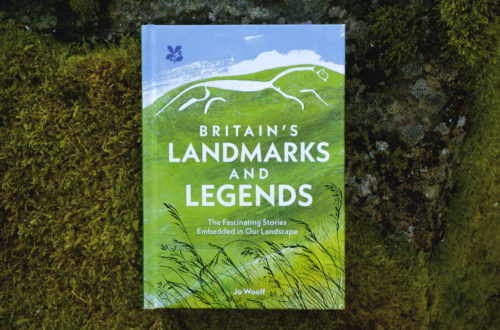
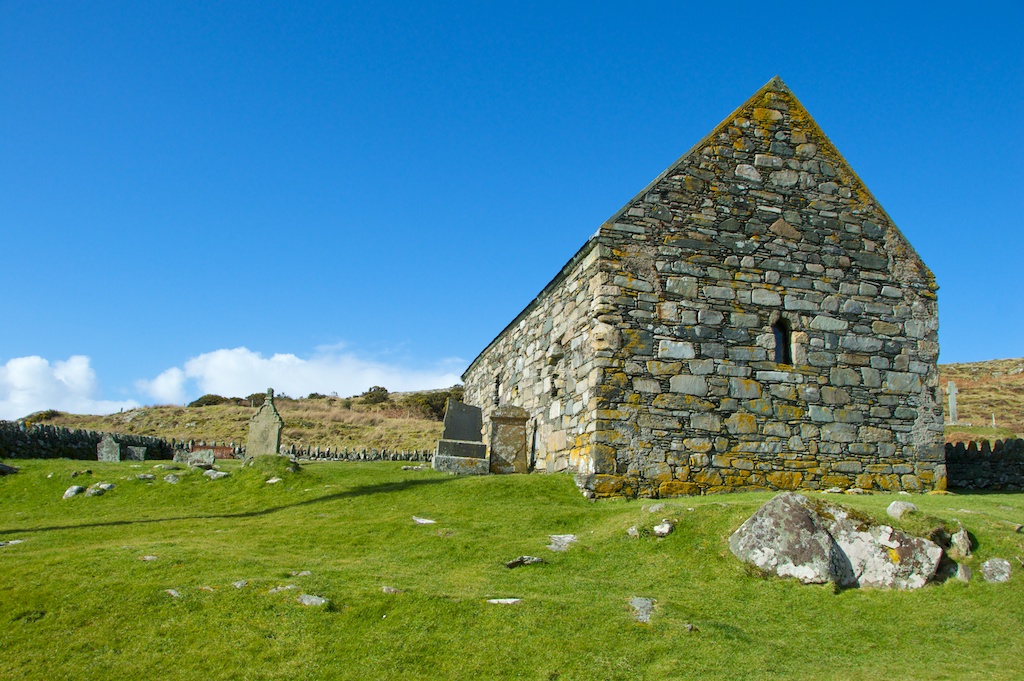
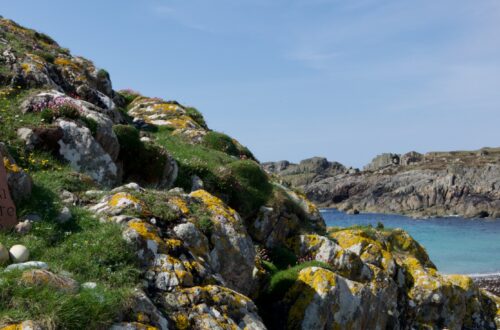
24 Comments
Pat
That is one monster of a gun! I wonder how many horses it would have taken to move it. Interesting article. Thanks, Jo.
Jo Woolf
That’s a good point, Pat! A lot, is probably the answer. I expect it moved VERY slowly! But imagine the spectacle! 🙂
Susan Abernethy
Good read Jo. I just can’t get enough of that crazy story about the cannon and the king!
Jo Woolf
Thanks, Susan! I know – he was a nutcase!
oglach
Scottish people scare me; this cannon doesn’t, because I live with a Scottish woman. I’ll take my chances with the cannon. Very informative post, great photos. 🙂
Jo Woolf
Haha, I see your point! 🙂 Thanks, glad you enjoyed it!
Marie Macpherson
Reblogged this on Marie Macpherson.
blosslyn
Oh dear that was a bit of bad luck for James II, and it wasn’t even Meg who got him 🙂 Wonderful bit of history 🙂
Jo Woolf
It certainly was, Lynne! He was playing with fire, definitely!
Fife Photos and Art
Very interesting Jo, I never knew that one cannon could have such a story to tell. the terrible twins would have no doubt invoked great fear in an enemy at the sight of them appearing on any battlefield!!
Jo Woolf
You’re right, Andy – it must have been a terrifying sight! I can’t help feeling a weird fascination for all the Stewart monarchs, as most of them had some kind of fatal obsession or inclination.
Fife Photos and Art
They were a fascinating bunch, and they had quite a dynasty over Scotland’s rule, at a period of time when Scotland truly became Scotland as we know it today!
Bella and Esme
Fascinating! I have a photo of me stood by that gun and never knew any of its history. Now I do thanks to you 🙂 x
Jo Woolf
That’s great! Glad to fill in the missing story! 🙂
http://vivinfrance.wordpress.com
Guns, their makers, owners, users: murderers all. I have seen Mons Meg and quailed.
Jo Woolf
I know, Viv – it’s a daunting sight. There was a dark side to James II and all the Stewart kings for that matter. Promise you a more uplifting post to come! 😀
tearoomdelights
I had no idea Mons Meg was so old and had such a history. I’m astonished that a cannonball could be fired across two miles, that’s a monstrous distance. Great picture of you bravely putting your head into the barrel, but did you feel at all nervous? I know she’s out of action, but even so… :-/
Jo Woolf
I know, Lorna, it’s a formidable weapon, even now. Yes, I did feel a bit nervous! But I’ve heard from people who have climbed into it as children, in the 1920s or 30s. I don’t think they’d be able to do so now, however!
tearoomdelights
Crikey!
Thom Hickey
Fascinating. Thanks for so much entertainment and illumination this year. Regards Thom.
Jo Woolf
You’re most welcome, Thom! Really glad you’ve enjoyed my posts and thank you for your kind comments.
Pingback:
Christopher Skoog
It looks like this was a muzzleloader. How were its huge cannon balls lifted up into place for loading?
Jo Woolf
That’s a good question. I don’t know – I wonder if the cannon itself was lowered so the ball could be rolled in, then raised up and angled by means of levers.